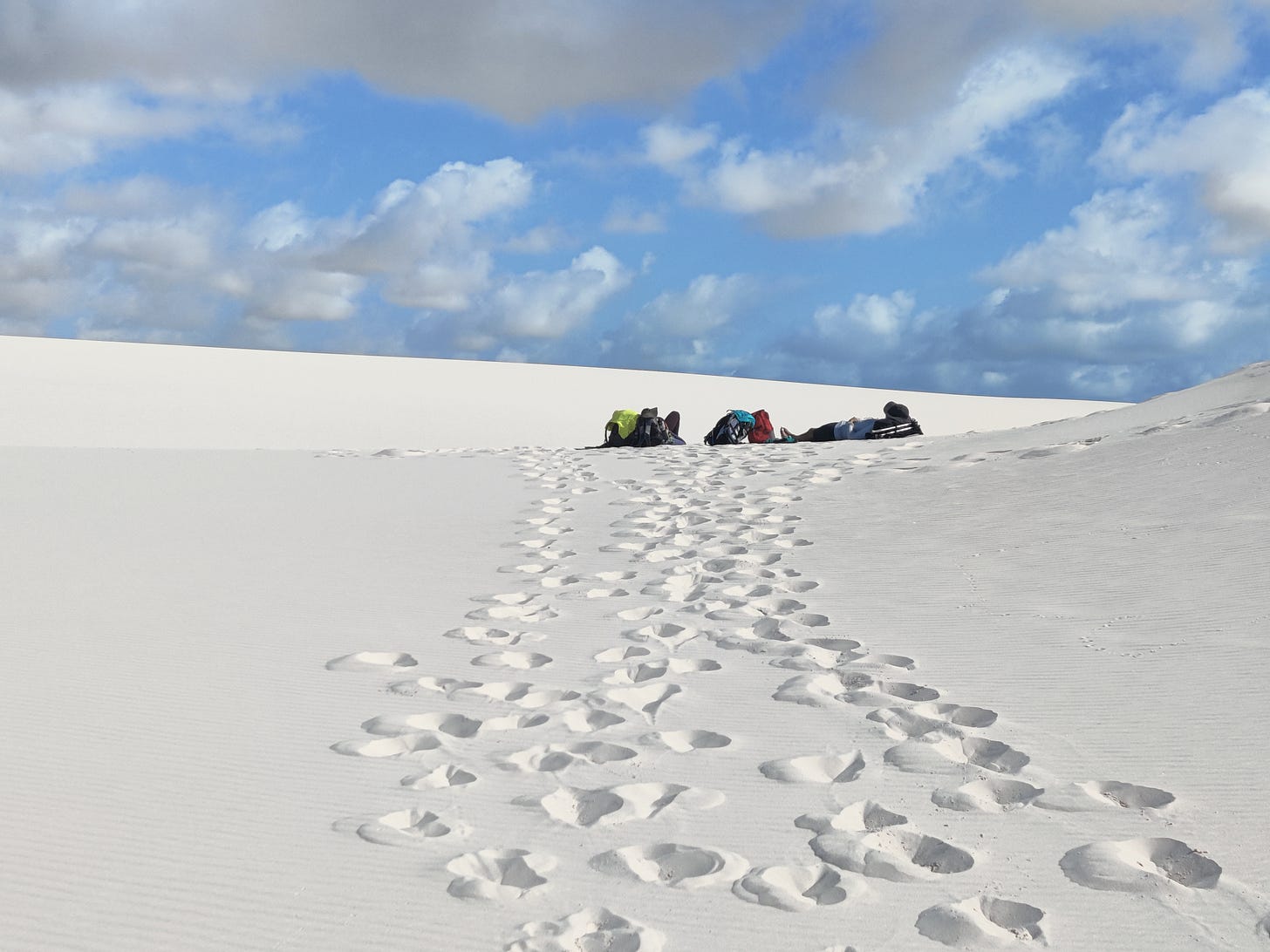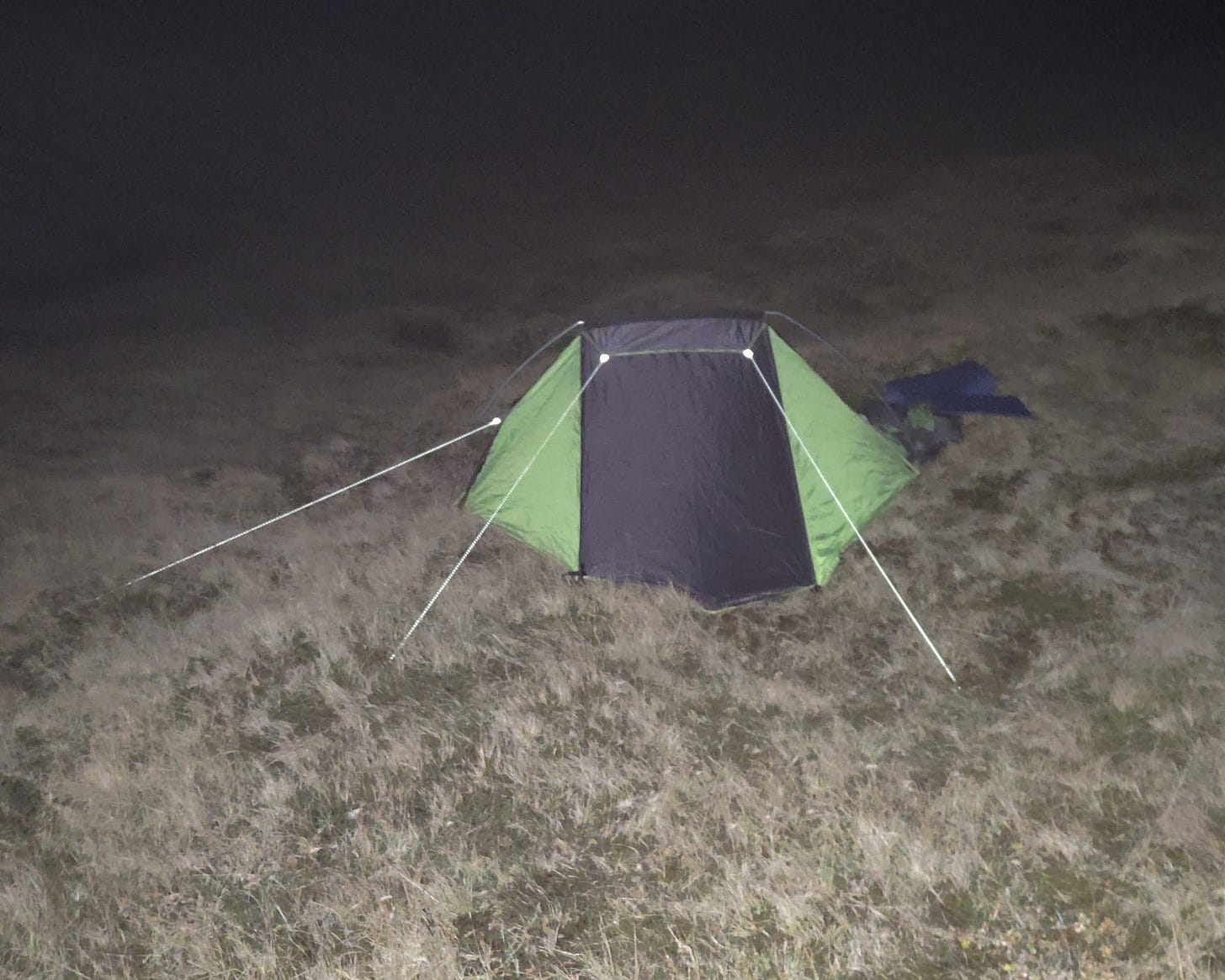Tides and the fight against the sand in the Brazilian Northeast
On tides, sand, winters, and how certain rough lives might be more natural than mine

I arrived at the beach and it looked completely different from the previous afternoon.
Then, the waves were hitting up against the barrier, set up exactly to prevent the water from advancing. There was no sand to be seen, just water.
Today, a different picture.
Instead of water, there was only sand, stretching almost a kilometer into the ocean.
In the distance I could see waves breaking at the reef, and started to walk towards it.
A few hundred meters from the barrier reef that was above water, the sand turned to shallow water and some scattered corals began to appear. I zig-zagged my way through them in knee-deep water and eventually hit the reef maybe fifty meters or so before the section that was visible above water.
Here, a man walked from left to right, occasionally poking at the water with a stick.
Curious, and not wanting to walk over the coral, I shouted over:
“What are you fishing for out here?”
The man slowly made his way towards me, never failing to poke here and there, until he reached me.
“Octopus”, he replied.
The man wore a hat and clothes and some rubber shoes to protect his feet from the coral. He looked to be over sixty.
His name, or more likely nickname, was Cal, and being very friendly, he happily answered all my questions.
He told me about how the octopuses like to be inside little caves in the coral, and about how he pokes with a stick from one side and then uses a snare pole to capture the octopus alive from the other end. He then showed me a supermarket plastic bag filled with water and containing eight live octopuses (of a small breed) inside.
The bag weighed around a kilo and a half, and he told me about how he sells the kilo for around 10 US dollars.
“Soon it’ll be time to leave, the tide is turning”, he said.
Octopus can only be caught there on low tide, a window that’s around three or so hours.
Cal also taught me about “dead tides”, which happen about four days after a full moon or a new moon. During these, the low tides are higher, and so catching octopuses in the reef isn’t possible. When this happens, Cal goes out to open sea to fish for mullets instead.
The reason I’d walked all the way over there to talk to Cal is that I’m fascinated by people who live their lives in sync with nature in this way.
Cal’s working hours are defined by the moon, and are never the same on any given day. Even his job description is flexible and dependent on Earth’s natural satellite.
On the other hand, I think about how us over in cities mostly have fixed working hours, independent of what’s going on outside.
Up in Iceland and Finland, both places I’ve lived in, we’re working the same hours irrespective of the fact that during the summer there’s sunlight for almost the entire day (or actually the entire day in some places), and in the winter there’s just a handful of hours of sunlight.
We drink coffee to override our biological clocks and transit through infrastructure built to make us as indifferent to the outside conditions as possible. We are protected from rain, from warmth, from cold, from light, from darkness.
I think back to the time I went wild camping in late October in Iceland. By 4:30pm, I was tucked inside my tent, whereas back in the city I’d still be on my laptop working at that time.
The sun would set soon after, meaning it was about to get cold and dark, and it’s best to be inside when that happens. I also fell asleep by 8pm, whereas I normally would do so at around midnight.
I also think about Djupavík, one of the Northernmost towns in Iceland, where despite being so close to “civilization”, a family chooses to spend the winter there every year.
During the summer, reaching the town can be easily done by car, in a one-hour drive from Holmavík, a proper town with a supermarket, a health clinic and so on.
Yet in the winter, they get cut off for three months or more, depending on however long the snow wants to last. The only way to get out is through a hard snowmobile ride over the mountains, so they stock up in advance and prepare to live off whatever they have, not counting on getting any extra supplies through the winter.
(Except I was told that they once ran out of beer, so a heroic snowmobile party was set up to remedy the problem).
And then I think about the Lençóis, again in the Brazilian Northeast, where some families live amidst the dunes. Similarly to Dune, the movie, they have developed their own tactics for survival in that environment — including how they dress, their diet, and how they navigate.
Every day the dunes shift, yet they never fail to find their way through them. The sand also continues to creep in and makes the “oases” in which they live smaller and smaller each year. Homes are lost and rebuilt regularly. It’s a constant fight against the sand.
Such lives seem rough and unpredictable, but to me, they also seem more natural.
Tides in particular are a topic I think about often. In many places I’ve visited you hear about how such thing can only be done with a high or a low tide. Places that can only be accessed when the tide is low, boats that can only be sailed when the tide is high.
That’s that — there’s no way around it. You just have to accept it.
I wonder sometimes if a lot of the anxiety many of us deal with comes down to the fact that we’re dealing with experiences that our biological instincts are not equipped to handle.
We have substances to override our feelings and conditions, structures to shield us from the environment, devices that render certain tasks obsolete and create new forms of interaction.
It just gets me thinking: how out of touch are we, and what’s it doing to us?
“Then he was interested by the question why in all great towns men are not simply driven by necessity, but in some peculiar way inclined to live in those parts of the town where there are no gardens nor fountains; where there is most dirt and smell and all sorts of nastiness.”
- Fyodor Dostoevsky, Crime and Punishment






